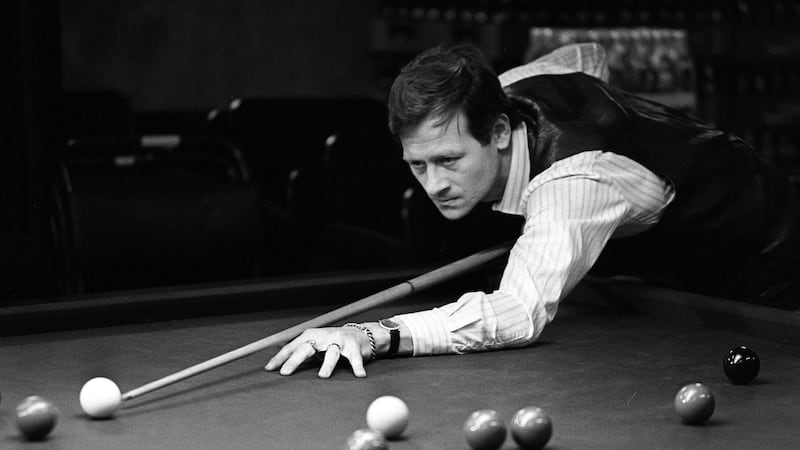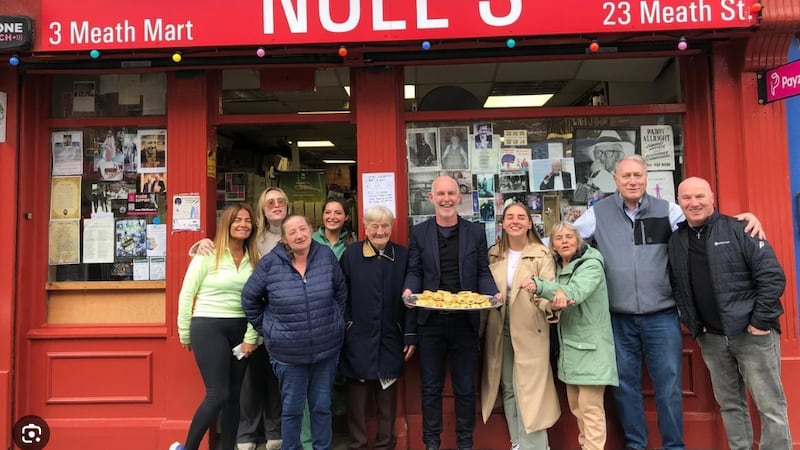Fr Martin Henry in Faith Matters (August 18) states that faith must continue to contain the twin claims, both that Jesus is the Word of God through whom and for whom this work was created, and is also the Son of God who illuminates the world and redeems it from sin and death.
The problem is reconciling faith and reason since the world is full of natural evil since the Big Bang, first as disorder in matter-energy and then pain and death in all living forms which emerged via evolution long before homo sapiens arrived on Earth. The contradiction that God apparently created death and then destroys it in Jesus has never been answered.
Fr Henry seems to be unaware that an answer has been suggested in several letters to The Irish News during the past decade.
The Catechism teaches that original sin and the fall are the answer, but homo sapiens only have a very short history in contrast to the billions of years from the Big Bang, reinforcing the question that if humanity is not responsible, do we blame God?
This is very poor theology, so as Genesis states, humanity tempted by Satan is the culprit. Having read all I could obtain of Teilhard de Chardin’s publications which discussed the problem, it suddenly dawned on me in the 1970s that original sin with the fall did not happen in space-time on Earth (Eden) but in the Transcendental realm of God, above space-time.
Creation began as non-divine living knowledge in the Word who is the divine immortal living knowledge of the Trinity. This non-divine knowledge is in the image of the Trinity, three Persons-in-One. All life was then many ideas as one, intending the whole world to be one immortal living body for all, but each distinct as in the Father, the Son and Holy Spirit.
Tempted by Satan this knowledge which was totally good brought knowledge of evil into itself, and so could not live in the transcendental divine presence. It was expelled from paradise and actualised as the fallen world, scattered and divided in space-time. Everything animate and inanimate in Creation was blemished by original sin until the conception of Mary and then Jesus. They are always immaculate in bodies and souls, unlike us who are blemished in both.
The Church now requires this foundation to a new synthesis which illuminates dogma and doctrine, especially now as science and ensuing technology are becoming increasingly important in our lives. Science deals only with finite space time and this distorted reality, whereas the true reality of creation is always transcendental from our eternal beginning in the Alpha Christ to our eternal destiny in the Omega Christ.
JOHN ROONEY
Belfast BT9
No authoritative source to support religious violence claims
Danny Treacy (August 11)makes exaggerated and unsubstantiated claims about the treatment of Huguenots in 16th and 17th Century France.
He asserts that during the St Bartholomew’s Day riots of 1572 Catholic mobs slaughtered maybe 100,000 of them. He fails to give an authoritative source supporting this spurious claim.
Diarmaid MacCulloch, professor of Church history at Oxford, tells us in his history of the Reformation 1490 to 1700 that during the St Bartholomew Day riots which continued for four weeks and spread throughout France that it has been calculated that around 5,000 victims were slaughtered.
Danny further states that in France the Catholic monarchy, aided by the Catholic Church, slaughtered hundreds of thousands of them. Again he produces no evidence in support of this claim which seems to be based more on hyperbole than historical fact.
It is true France was racked by religious violence in the 16th and 17th centuries and there were extremists on both sides but MacCulloch, who tells us he is of Huguenot descent on his mother’s side, pays tribute to Henri III, Henri IV and Cardinal Richelieu for their efforts to keep the Huguenots.
The Huguenots brought disaster on themselves by refusing to compromise in the 1620s.
Despite many imperfections he states it was remarkable that adherents of the minority religion were never excluded from public office.
This is in contrast as to what he tells us about the plight to Catholics in England where they were excluded from public office and there were harsh laws – the Recusancy Laws – forcing them among other things to attend Church of England services and take communion.
The professor states: immense sacrificed preserved Catholicism and they were vital because the government wanted to destroy Catholicism, if not necessarily Catholics.
G SAVAGE
Newcastle, Co Down
Dust has not yet settled on Brexit
DOMINIC Doherty in his letter ‘Negotiations on Brexit an opportunity to shape a new Ireland’ (August 17) refers to the opportunities that present themselves post the decision by a majority in the Brexit referendum to leave the European Union. He sees possibilities and they are not unobtainable in his view.
Yet, there is a thing called optimism bias. We all have it at times, when the team has lost three in a row, well they’ll come good in the fourth or fifth. Nothing wrong with that.
My own take on the Brexit thing is that I’m not at all sure the dust has settled on the ramifications of this result.
I’m not qualified to talk about the EU monies and all that. For me the challenges (there are I’m sure unknown ones) are the border in the first instance. I just cannot see how an EU member can interfere with a non EU member without howls of ‘foul’ from the rest of the EU. Thus a border.
Mr Doherty sees opportunities, I see challenges. I want to have an optimism bias let’s see.
MANUS McDAID
Derry city
Subtle distinction
I don’t understand the purpose of The Irish News (August 23) noting that the deaths of the two men as members of the IRA happened ‘in May 1922 – months after the Anglo-Irish Treaty was signed’, except to imply that the men were in some way less worthy of remembrance by Glenariffe GAA club because of that. Does The Irish News believe that had the men been killed before the Truce of 1921, present unionist opposition would have been any less? More importantly perhaps, does the remark represent a mindset that the actions of the IRA during the War of Independence which led to the truce and to partition were all fine, the actions of the IRA since then, however, not to be regarded in the same light? Political unionism would have little interest in such subtle distinctions.
PATRICK FAHY
Omagh, Co Tyrone
Selective memory
Trevor Ringland (August 22) has a very selective version of the events which led to the deaths of Anne Maguire’s children and the formation of the Peace People in 1976.
He neglects to mention that the young IRA man, Danny Lennon, was shot dead by the British army while he was driving a car. The car obviously went out of control and crashed into the Maguire children, killing them.
If he wants the story of Anne Maguire and her family to be emphasised, rather than “the story of others”, he could set an example by giving the whole context.
JUDY PEDDLE
Charleville, Co Cork







